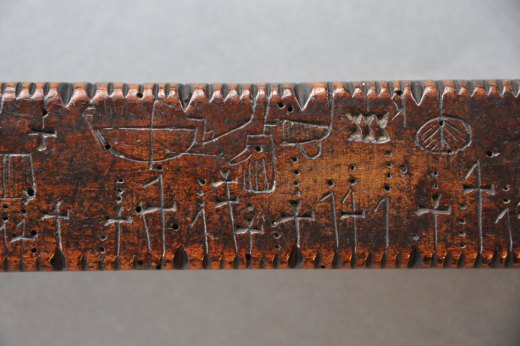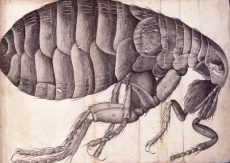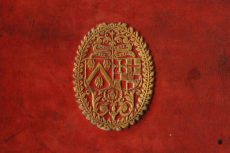- About
- Visiting
- What’s On
- Venue hire
- Catalogues
- Collections
- Belle Vue – search archives catalogue
- Digital Resources
- Art Treasures Examiner of 1857
- Manchester Association for Constitutional Order
- The North Western Museum of Science and Industry: Some Reminiscences by Richard Hills
- Criminal Manchester
- The Cup of Destiny
- Athenaeum Souvenir
- Middle English Manuscripts
- Manchester and Liverpool of Today
- Hollingworth’s Mancuniensis
- Memoir of Cecil Wray
- William Seward’s Diary
- The Anti-Monopolist
- Fishwick’s History of Rochdale
- Knyvett’s Defence of this Realm
- Tractatus de Nigromantia
- Axon Ballads
- Prints and Photographs
- 101 Treasures of Chetham’s
- Printed Books & Ephemera
- Archives & Manuscripts
- Blog
- Support us
Clog Almanack
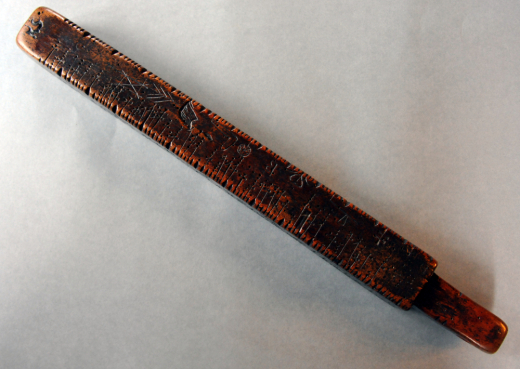
From its early beginnings, the Library acquired items which would properly belong in a museum. An early guide to the Library lists some of them: an alligator’s skin, a young swordfish and the sword of an old one, a flying stag, two heads of the same, and the tail of a rattle snake, the shells of an ostrich egg, two cocoa nuts, a large calabash, a branch of white coral, a loadstone, a stone tankard, a tortoise shell and a humming bird, and the following year, a large stone taken out of a woman’s bladder, which weighed over 14 oz.
Sadly, most of these items were removed from the Library in the late nineteenth century. Among the Library’s few remaining curiosities are two wooden clog almanacks. A clog almanack is a calendar for the illiterate, a block of wood on which weekdays, Sundays and saints’ days are denoted by curved notches and symbols associated with saints.
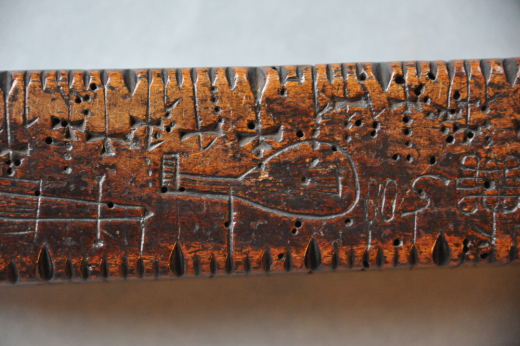
Wooden calendars in the form of rune-stones originated in Scandinavia from where it appears they were brought to Saxon England. These were usually flat pieces of wood, the notches being cut on both sides. By the seventeenth century the almanack had developed into a four-sided piece of wood, each side of which bore the marks for one quarter of the year.
This clog was given by Henry Finch in 1696. To consult the calendar the handle is held in the hand and the symbols read from the bottom upwards. Once this quarter is completed the clog is turned to the right.
